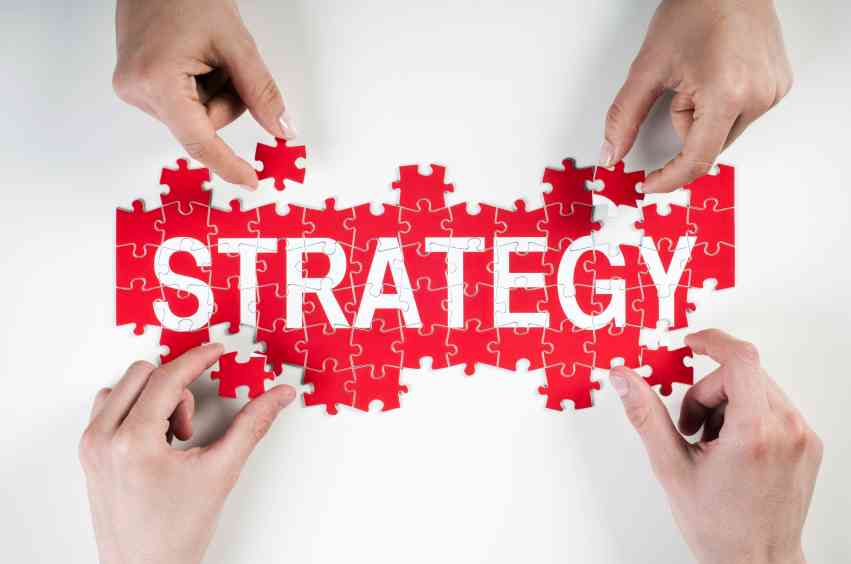
IN part 1, we explored the foundations of strategy and the multi-level architecture through which it is formulated and executed.
We also established that while management leads execution, the board has an undeniable influence on strategic direction.
The question that remains is — how far should the board go in shaping strategy without crossing into management territory?
Boards today are called upon not just to review and approve, but to challenge, guide and ensure coherence between strategic intent and long-term sustainability.
An effective board strikes a delicate balance: maintaining independence and objectivity, yet staying sufficiently engaged to ensure strategic resilience.
The strategy cycle
The strategy cycle represents the continuous process through which organisations define their direction, execute plans, measure progress and realign based on emerging realities.
It typically follows four iterative stages: formulation, implementation, evaluation and adaptation.
- Commodity price boom buoys GB
- Why are some nations neutral on the Russia-Ukraine war?
- Gwanda residents apprehend robbers
- Police sweat over missing student
Keep Reading
During formulation, leadership defines the vision, goals and pathways for value creation.
Implementation translates plans into action through budgets, resource allocation and operational initiatives.
Evaluation involves performance monitoring, risk assessment and learning from both successes and shortfalls.
Finally, adaptation ensures that insights from evaluation feed back into refining the strategy in response to market shifts, technological advances, or stakeholder expectations.
Boards play a crucial role at each stage — providing oversight during execution, demanding evidence of performance and guiding strategic recalibration.
The strategy cycle thus reinforces that strategy is not a one-off event, but a living, evolving process that sustains organisational relevance and competitiveness over time.
The board’s role across the strategy lifecycle
A mature governance system defines clear intersections between the board and management throughout the strategy lifecycle as follows:
Strategic direction setting (vision and purpose)
The board ensures that the organization’s vision and purpose remain relevant in a changing environment: Approves or refreshes the organisational purpose and values; endorses strategic priorities that align with stakeholder expectations and the organisation’s mandate; and provides foresight — questioning long-term viability rather than short-term performance.
Strategy formulation: While management leads the technical process, the board adds strategic value through: Challenging underlying assumptions and testing key scenarios; ensuring alignment between the strategy and external factors such as macroeconomic trends, regulation and technological disruption; and guiding trade-offs between risk appetite and growth ambition.
Strategy approval and resource alignment: The board ensures that strategy translates into a funded and achievable roadmap; approves capital allocations, budgets and key performance measures; and confirms that financial, human and technological resources are aligned with strategic priorities.
Execution oversight and evaluation: This is where many organisations falter — translating plans into results; Monitors progress against strategic milestones; tracks leading indicators of transformation, not just lagging financial metrics; demands clear accountability frameworks for implementation; and reviews post-implementation reports to close the strategy-feedback loop.
Integrating the levels, strategy
Boards need to view strategy through two lenses simultaneously —
the three levels of strategy (corporate, business, functional) and
the three horizons of growth (H1, H2, H3).
The interplay between the two creates the “strategy map” that guides oversight.
Drive future-ready talent, culture
Boards must ensure that management’s focus is not skewed towards Horizon 1, where short-term financials dominate, but rather that sufficient attention and investment flow to Horizon 2 and Horizon 3, which drive sustainability and renewal.
Embedding ESG, GRC
In today’s environment, Environmental, Social, and Governance (ESG) and Governance, Risk, and Compliance (GRC) have become essential pillars of corporate strategy.
They are no longer peripheral concerns; they define how organisations create long-term value, manage risks and sustain legitimacy.
ESG integrates environmental stewardship, social responsibility and ethical governance into decision-making. Boards must ensure that strategic plans consider the organisation’s environmental footprint, contribution to society and adherence to transparent governance practices.
Beyond compliance, ESG performance increasingly determines access to capital, investor confidence and brand reputation.
GRC, on the other hand, provides the structural foundation for effective governance and risk management. It ensures that strategic decisions align with regulatory requirements, ethical standards and enterprise-wide risk tolerance.
A strong GRC framework links compliance with strategic intent, fostering a culture of accountability and proactive risk anticipation.
Together, ESG and GRC elevate board discussions from operational oversight to strategic stewardship. They compel boards to balance profit with purpose, ensuring sustainable growth that benefits shareholders, employees, communities and the planet.
Boards must, therefore, integrate these frameworks into the heart of strategy, not treat them as reporting obligations. A forward-thinking board:
Links ESG priorities directly to the corporate strategy, not just compliance.
Oversees risk governance to ensure alignment between strategic risk appetite and enterprise resilience.
Embeds sustainability and governance metrics into executive performance scorecards.
Positions the organization as a responsible corporate citizen — building legitimacy, trust, and long-term value.
From oversight to foresight
In a volatile, uncertain, complex, and ambiguous (VUCA) world, boards cannot afford to be spectators in strategy. The shift must be from monitoring the past to anticipating the future.
Boards that embrace strategic foresight — using scenario planning, trend analysis, and stakeholder intelligence — enhance their organizations’ ability to adapt, survive and thrive. Strategic governance is not about predicting the future; it is about preparing for it.
Conclusion
The board’s role in strategy has evolved from compliance and approval to catalytic leadership - ensuring that the organisation remains future-fit, sustainable and competitive.
In doing so, the board must ensure a continuous loop of strategic dialogue, insight, and accountability between itself and management. Ultimately, effective boards govern for the future, not merely oversee the present.
We shall be concluding the series in Part 3 by exploring the details of the critical role Boards play in creation and development of strategic legacies in organisations
Matigimu is a business consultant and trainer. He is a seasoned business executive whose career spans over 35 years, most of which were in the C – suite, in financial services, industry and commerce. These weekly New Perspectives articles, published in the Zimbabwe Independent, are coordinated by Lovemore Kadenge, an independent consultant, managing consultant of Zawale Consultants (Pvt) Ltd, past president of the Zimbabwe Economics Society and past president of the Chartered Governance & Accountancy Institute in Zimbabwe. — [email protected] or +263 772 382 852.











